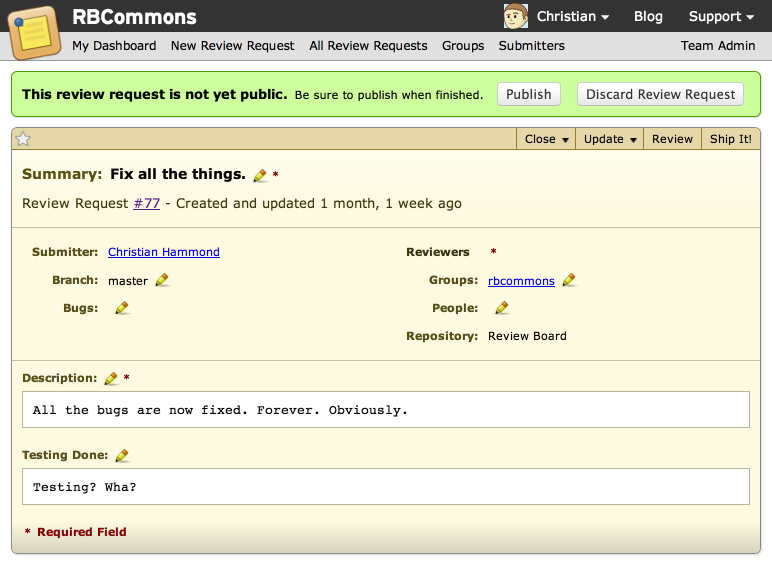We hope you had a great 2013. We sure did, and 2014 looks to be even better. We have a number of new things coming in the next several months that we’re sure you’ll love.
First, let’s talk newsletters.
Up until now, all our announcements have taken place on our blog and on Twitter, but that’s not always the best way to keep you up-to-date.
We’ve just made it easier to keep current on the latest updates to RBCommons and to RBTools. You’ll now find an E-Mail Announcements section on your My Account page where you can easily subscribe or unsubscribe to our newsletters. These cover RBCommons and RBTools updates, as well as code review tips and tricks.
You’ll only hear from us when we have something that’s worth your time.
We are also not subscribing anyone by default. If you don’t choose to subscribe, you won’t receive any more e-mails from us unless it is truly important.
What’s coming in 2014
Over the next couple of months, we’ll be introducing support for two-factor authentication and PDF document review.
Two-factor authentication will help keep your account secure by making use of your mobile devices to verify that it’s actually you logging into your account.
PDF document review works much like code or image review. If you upload a PDF onto a review request, your team will be able to flip through the pages and make comments on sections of the document. Useful for specifications, manuals, or anything else.
We’re also working on a large update to our Review Board software, which RBCommons is based on. Among other things, this release will provide:
- Markdown support for review requests and comments
- Easy posting of review requests for changes already pushed to your repository
- An improved diff viewer with better move detection, better interdiff support, an improved revision selector, and a fresher design
- Faster loads and fewer reloads
- Batch operations in the dashboard (useful when you want to close several review requests at once)
- Full-text search of all your review requests and reviews
- New API additions for matching review requests and commits
- Much more. You can see our beta 1 announcement for some details, and keep watching for a beta 2 announcement.
We’re aiming to bring this to you by Summer this year. Sooner, if all goes well. We’ll keep you informed on our blog and newsletters.
Thanks for reading, and have a great year!




